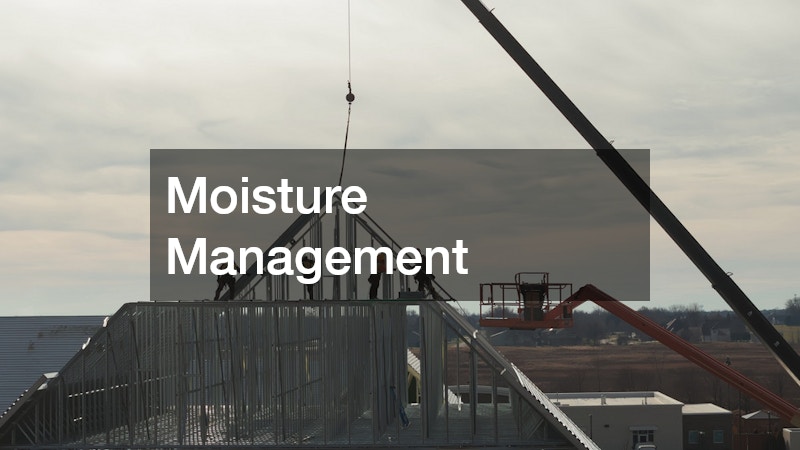Explore the often-overlooked aspects of metal roof installations that can make a significant difference in their performance, longevity, and appeal. Metal roofing has surged in popularity due to its durability and aesthetic appeal, but many homeowners are unaware of the intricacies involved in its installation. Understanding what goes on behind the scenes can provide potential metal roof purchasers with invaluable insight into the best practices and considerations that ensure a successful roofing investment.
Material Considerations Behind Metal Roofing
Types of Metal Used
Discover the variety of metals available for roofing, each with its own unique advantages and characteristics. Aluminum, for instance, is celebrated for its lightweight nature and resistance to corrosion, making it ideal for coastal environments. On the other hand, steel is known for its strength and ability to withstand severe weather conditions, while copper boasts longevity and a timeless aesthetic that developers often seek for high-end projects.
Each type of metal used in roofing has specific properties that cater to different climates and design requirements. Aluminum’s non-reactive nature to saltwater makes it particularly suitable for homes near oceans, whereas steel’s robustness accommodates heavy snow loads in northern climates. Copper’s patina adds an aged charm to architectural designs, transforming over time while maintaining its structural integrity for over a century.
Coatings and Treatments
Learn about the different coatings and treatments that enhance the durability and appearance of metal roofs. Galvanization, which involves applying a protective layer of zinc, is a common treatment for steel roofs to prevent rust and corrosion. Additionally, advanced coatings with reflective pigments can greatly increase a roof’s energy efficiency, reducing cooling costs by deflecting sunlight.
Acrylic or polyester paint systems can also be applied to metal roofs to improve their aesthetic appeal while providing an extra layer of weather resistance. These finishes come in a variety of colors and styles, allowing homeowners to match their roofs with architectural designs or personal preferences. With technological advancements, coatings have evolved to include UV protection, extending the lifespan of the roof significantly.
How the Installation Process Affects Longevity
Substrate Preparation
Understand the importance of proper substrate preparation and how it impacts the roof’s overall health. The substrate provides a foundation for the metal panels, and any flaws can result in compromised roof performance over time. Ensuring the substrate is flat, dry, and clean is essential, as even minor imperfections can lead to water leaks and reduced material lifespan.
The substrate should be prepared with an appropriate underlayment, often comprising synthetic materials that enhance water resistance and protection against wind-driven rain. This step not only reinforces the roof structure but also aids in noise reduction when the metal panels expand and contract. A robust underlayment acts as a secondary layer of defense against moisture infiltration, safeguarding the home from potential water damage.
Fastening Techniques
Explore the different fastening systems used and how they contribute to the roof’s long-term stability. Metal roofing installation involves specific techniques that ensure the roof withstands environmental factors such as wind, rain, and thermal expansion. A common method includes using concealed fasteners, which provide an unblemished appearance while securing the panels firmly in place.
Exposed fasteners are another technique typically used for corrugated or ribbed metal roofing, where screws with rubber washers are visible on the roof surface. These fasteners need careful installation to prevent water ingress and require regular inspections to ensure their integrity. Improper fastening can lead to misalignment, allowing water to seep under the roofing panels and causing potential structural damage.
Why Ventilation Is Crucial in Metal Roof Installations
Heat Regulation
See how proper ventilation helps in regulating temperature and increases energy efficiency. Effective ventilation systems allow roofs to expel excessive heat accumulated during hot weather, significantly reducing cooling costs. By balancing attic temperatures with outdoor conditions, they contribute to maintaining a consistent indoor climate throughout the year.
Without adequate ventilation, the build-up of heat can lead to thermal stress on roofing materials, affecting their durability and causing them to degrade prematurely. Over time, this heat can also impact living spaces, creating uncomfortable temperatures and placing extra demand on air conditioning systems. Proper roof ventilation offers a cost-effective means of mitigating these issues, preserving the structural integrity of the roof, and ensuring living comfort.
Moisture Management
Discover the role of ventilation in preventing moisture buildup and protecting the roof from potential damage. Adequate ventilation plays an essential role in allowing moisture-laden air to escape, preventing issues such as mold growth, wood rot, and ice dam formation. An effectively ventilated attic maintains low humidity levels, creating a healthier indoor environment and protecting the home’s structural components.
Poor ventilation can lead to moisture accumulation, especially in areas with high humidity or frequent rain, resulting in damage to insulation and the potential for mold spores to contribute to respiratory issues. By ensuring that moisture does not become trapped, roofs remain sound over time, extending their service life and reducing repair costs associated with water-related damage. Ventilation systems serve as a silent guardian, maintaining a dry and durable roof structure.
Acknowledging the unseen intricacies of metal roofing allows homeowners to fully leverage the advantages offered by this premium roofing material. As industry practices continue evolving, embracing these insights ensures long-lasting performance and satisfaction. With an appreciation for these hidden factors, consumers can confidently invest in a metal roof as a wise choice for protection, efficiency, and style.




